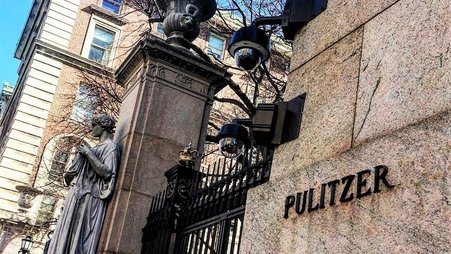
The case Sarah Palin lost against The New York Times this week was the first libel claim to even go to trial against the paper in nearly two decades. One might imagine these trials could be a lot more common: after all, the Times publishes constantly and there is no shortage of public figures who love to air complaints about critical reporting.
Some of those complaints even make it into legal claims. The Times was sued for libel in the United States 10 times between 2011 and 2017, for example, though none of those cases went to trial. That actual “close calls” are so rare reflects a critically important precedent in American law — one established by the Times itself.
That precedent, New York Times v. Sullivan, is a cornerstone of American press freedom, a unanimous 1964 Supreme Court decision that recognized the censorious possibility of libel litigation and adopted an appropriately high standard. Thanks to Sullivan, public figures need to show that publishers acted with “actual malice” to win a libel case. In legal terms, the actual malice standard means that the publishers must know the information they’re publishing is false, or act with reckless disregard of whether it’s true or false.
This technique for harassing and punishing a free press — now that it has been shown to be possible — is by no means limited to cases with racial overtones; it can be used in other fields where public feelings may make local as well as out-of-state newspapers easy prey for libel verdict seekers.
In Sullivan, Montgomery police had sued the Times over an ad placed by Martin Luther King Jr. supporters that described how civil rights activists had been treated during protests in Alabama. The Supreme Court recognized, however, that the same silencing tactics could be used in all sorts of cases. As one justice wrote: “This technique for harassing and punishing a free press — now that it has been shown to be possible — is by no means limited to cases with racial overtones; it can be used in other fields where public feelings may make local as well as out-of-state newspapers easy prey for libel verdict seekers.”
In Palin’s case, the Times and its supporters have always conceded that there was a factual error in the editorial in question, and ran a correction the day after its initial publication. Five years into the former governor’s litigation over the issue, the judge announced he would rule for the paper as a matter of law, and the jury ruled for the paper based on the specific facts. Palin, the 2008 Republican nominee for vice president, is very clearly a public figure, and her legal team simply could not show that the newspaper or its editors acted with actual malice towards her.
That high bar has been a critical press freedom protection for decades, and its value may be clearer now than ever. But it has come under unprecedented threat. Politicians — up to the former president of the United States — unhappy with the scrutiny of an independent press, have called for libel laws to be “opened up.” Two Supreme Court justices have suggested the Sullivan standard be revisited.
We’ve also witnessed litigants, bankrolled by billionaires, bringing ruinous suits against media outlets — such as the Florida case that bankrupted Gawker Media in 2016. In the Palin case, the Times likely paid a small fortune in legal fees, despite winning, and is likely to face more costs if Palin appeals. As the most financial stable newspaper in the country, it can afford it; there are countless media outlets that could not.
The intimidation effect of suing even when the Sullivan standard makes winning unlikely is common enough that there’s a name for these kinds of legal claims: a strategic lawsuit against public participation, usually abbreviated SLAPP. In some states, there are anti-SLAPP laws on the books to allow defendants to claim legal fees in cases they win — but these are limited in scope and only apply in those states. Passing a strong federal anti-SLAPP would be a major step forward for press freedom.
Until then, the Sullivan precedent is largely what stands between us and deep-pocketed plaintiffs from replaying the Gawker playbook against other news outlets. Palin’s attempted attack on the precedent should be understood as an effort to bring that grim future closer to reality.
We’re not the only ones to make that observation. Charles Harder, the attorney who led the Peter Thiel-funded team that brought down Gawker, was reportedly in attendance at the trial, taking very detailed notes.




